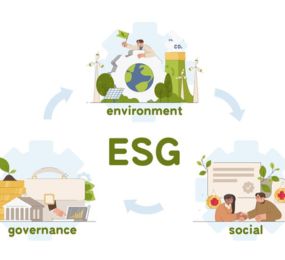ESG screening in investment portfolios is gaining traction as investors seek to align their financial goals with sustainable and responsible practices. By incorporating Environmental, Social, and Governance (ESG) criteria into investment decisions, investors can identify companies that not only deliver financial returns but also contribute positively to society and the environment.
One primary strategy for ESG screening is negative screening, where investors exclude companies or industries that fail to meet certain ESG standards. Common exclusions include sectors like fossil fuels, tobacco, and weapons. This approach helps investors avoid companies with significant environmental or social risks, thereby aligning their investments with ethical values.
Positive screening, on the other hand, involves selecting companies that demonstrate strong ESG performance. This strategy focuses on identifying leaders in sustainability, social responsibility, and good governance. By investing in these companies, investors can support businesses that are making a positive impact and are likely to be more resilient in the face of ESG-related risks.
Another effective strategy is best-in-class screening, which combines both negative and positive approaches. Investors select top-performing companies within each sector based on their ESG scores, ensuring a diversified portfolio that maintains high ethical standards across various industries.
ESG integration, a more comprehensive approach, involves systematically incorporating ESG factors into the investment analysis and decision-making process. This strategy assesses how ESG issues affect financial performance and adjusts investments accordingly. By integrating ESG factors, investors can uncover hidden risks and opportunities, leading to better-informed decisions and potentially higher long-term returns.
The benefits of ESG screening extend beyond ethical considerations. Companies with strong ESG performance often exhibit better operational efficiencies, lower regulatory and legal risks, and enhanced brand reputation. These factors contribute to more stable and sustainable financial growth, making ESG screening an attractive approach for long-term investors.
In conclusion, ESG screening in investment portfolios offers a strategic way to combine financial objectives with sustainability goals. By employing negative, positive, and best-in-class screening, or integrating ESG factors into the investment process, investors can support responsible businesses and achieve sustainable financial growth. This approach not only benefits the investors but also promotes broader societal and environmental well-being.
To register or learn more about the Forum please check here: https://www.leadventgrp.com/events/world-esg-and-climate-summit/details
For more information and group participation, contact us: [email protected]
















